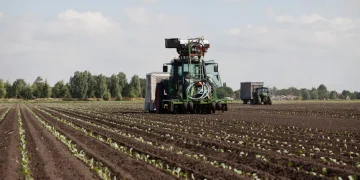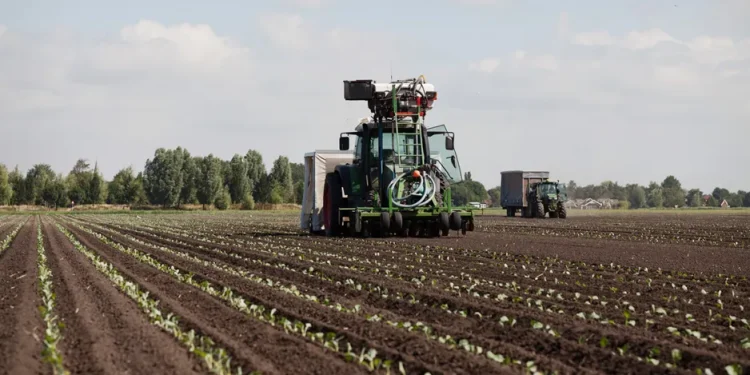Early Harvest and Overlapping Seasons Create Market Dynamics for Open-Ground Vegetables
The Dutch agricultural sector is currently experiencing notable fluctuations in the supply of key open-ground vegetables, including cauliflower, broccoli, and iceberg lettuce. The harvest for these crops commenced unusually early this year, starting a week to ten days ahead of the typical schedule. However, this early start has resulted in a scarcity of cauliflower, as reported by Robert Vogel of AGF-Direct. “The first cauliflower from the pots was very early, but now the first setting is already over, making cauliflower very scarce at the moment. I don’t see that changing in the first ten days either,” Vogel stated.
Despite the shortage of cauliflower, the prices remain relatively high, ranging between 2.30 and 2.50 euros. The situation is different for broccoli, which is in abundant supply. However, the overlap with the Spanish broccoli season is creating downward pressure on prices due to increased competition. “We ourselves have no product left for day trading, as everything goes into the programs, but the product price is between 2.30 and 2.50 euros, so that’s quite decent. There is enough broccoli, but the Spanish product is still a bit of a nuisance because the seasons overlap. So, those prices are under a bit more pressure,” Vogel explained.
Quality-wise, the season appears favorable in North Holland, despite some water in the paths which does not significantly affect the harder products like cauliflower and broccoli. However, varying conditions have impacted the planting schedules, potentially causing delays. Iceberg lettuce, being more sensitive to changing conditions, has shown some weaker batches and issues such as red discoloration. Vogel emphasized the challenge of managing customer expectations regarding the natural variability in agricultural products, remarking, “Honestly, I sometimes miss the understanding from customers, who seem to think that lettuce comes from a factory.”
The iceberg lettuce season began with exceptionally high prices, around 10-11 euros per box, but these have since stabilized to a more sustainable range of 6.50-7.50 euros, with sufficient supply currently available. Meanwhile, chicory has maintained structurally high prices throughout the season, recently auctioned at 3.30 euros on the Belgian clock. Although there might be a slight decrease, the prices are expected to remain elevated. The ongoing wet conditions could pose further challenges, particularly for the newly sown roots, which may result in continued supply limitations.
These market dynamics underscore the inherent risks and uncertainties faced by the agricultural sector. Farmers, agronomists, and industry stakeholders must navigate these challenges to ensure a stable supply of quality vegetables while adapting to shifting market conditions and customer expectations.































